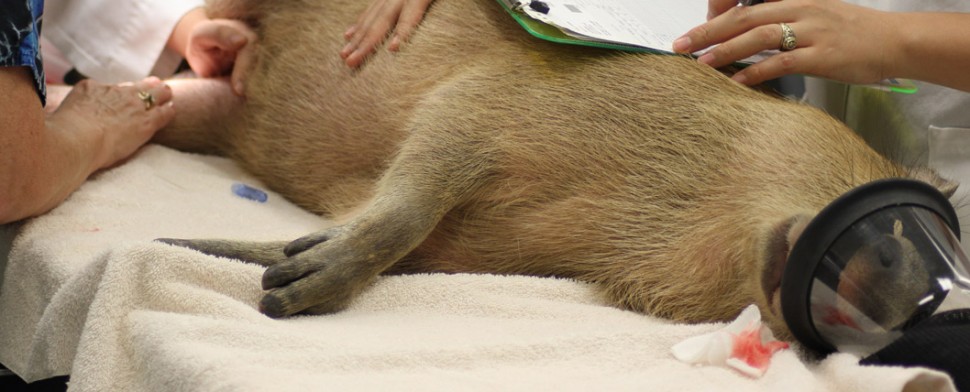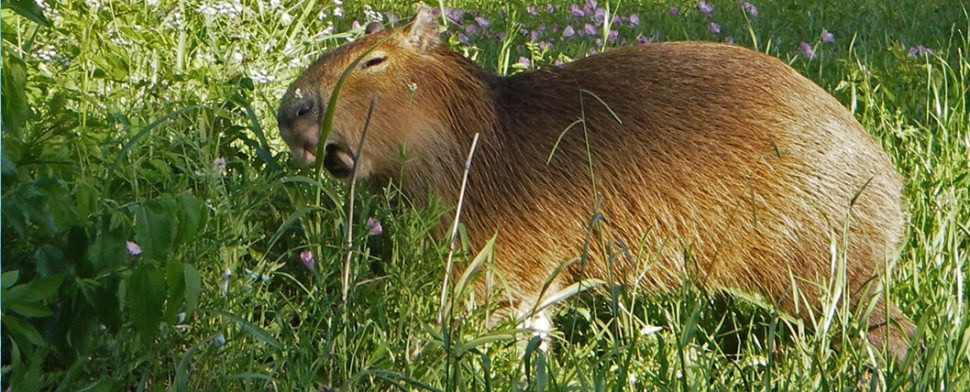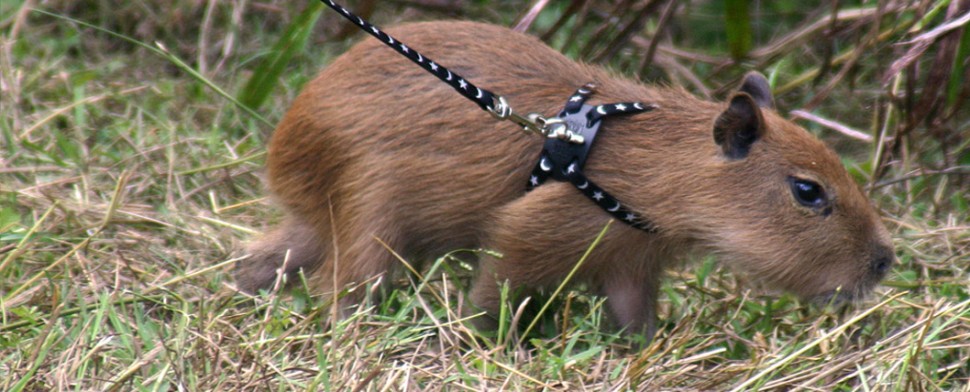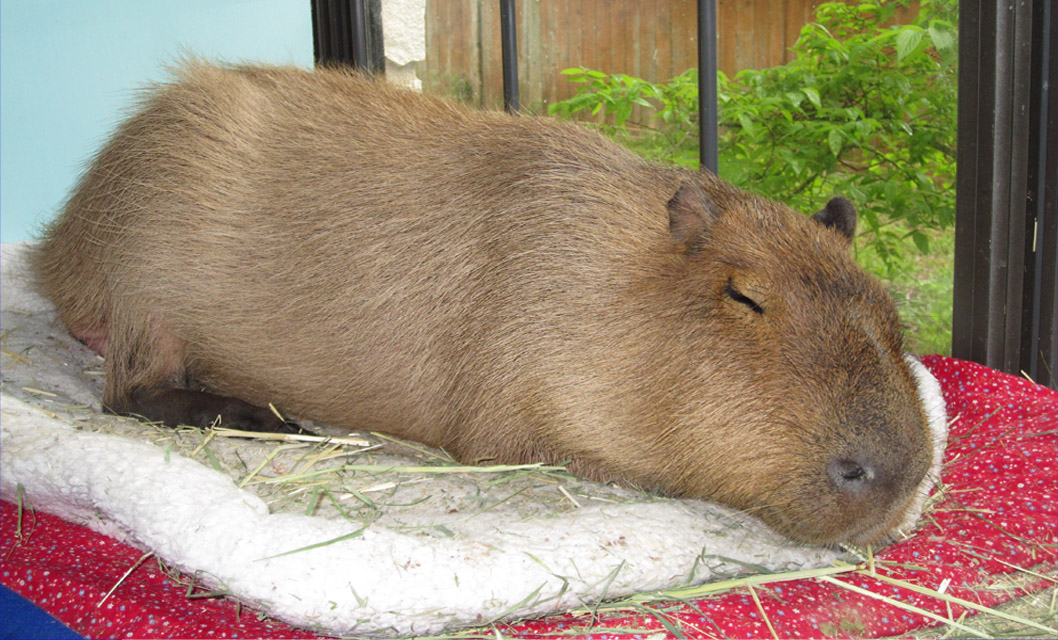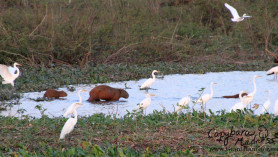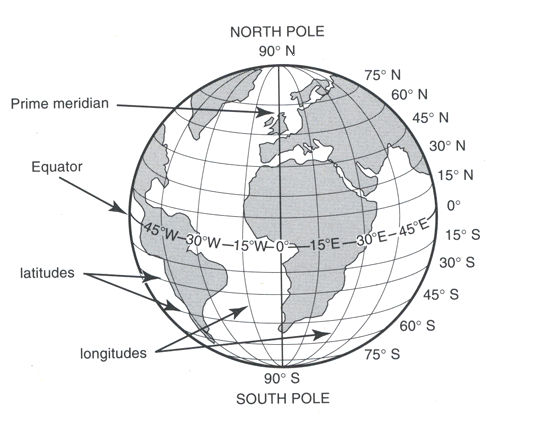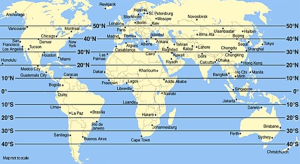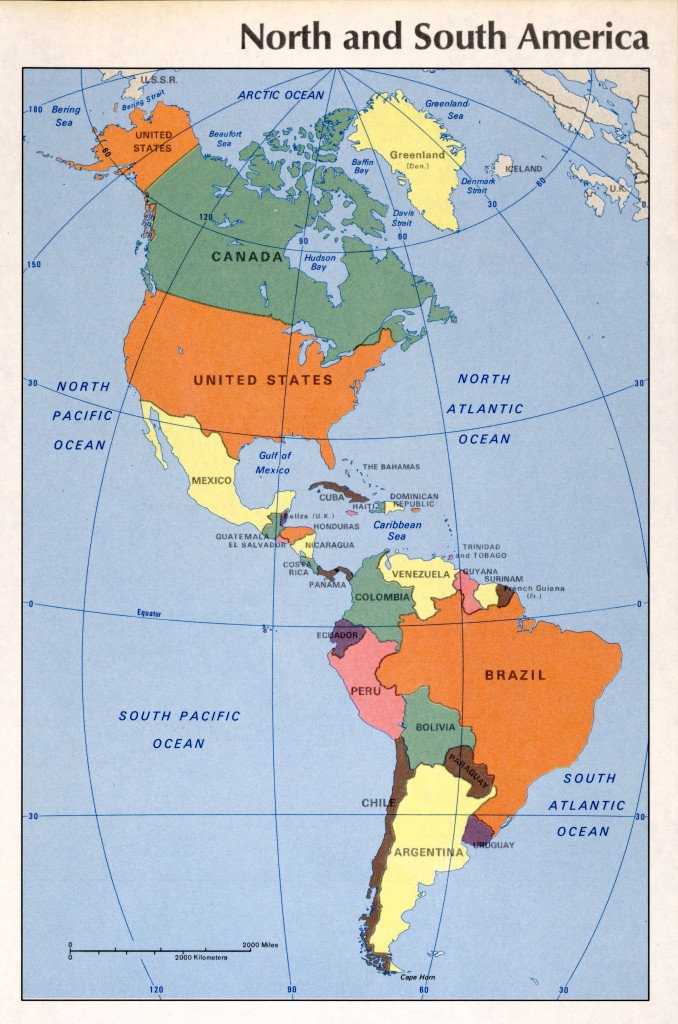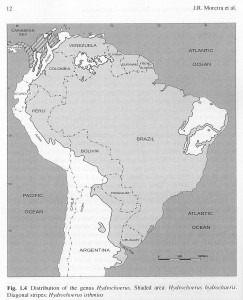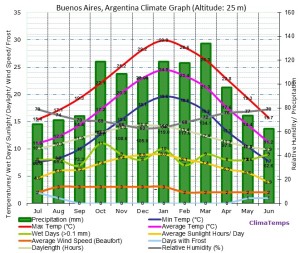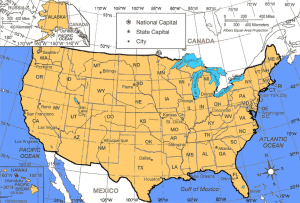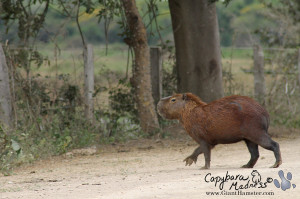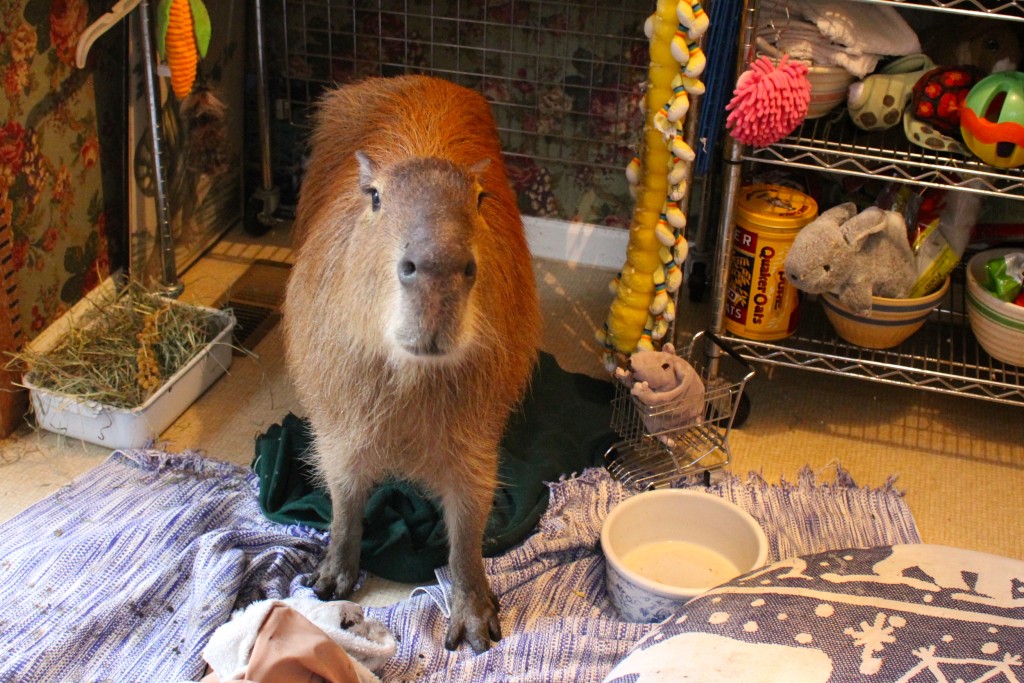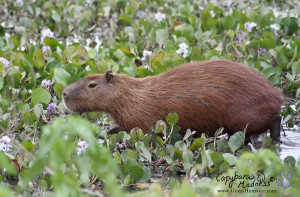
This capybara is wading through water hyacinths in Brazil. Are those hardy where you live? Photo credit: Melanie Typaldos (2013)
The simple answer is that capybaras live in South America. (No, they don’t come from Australia.) They range from eastern Panama, where the Lesser Capybaras live, and into Argentina in a limited region south of Uruguay. That isn’t very helpful if you are wondering whether one would be happy in your back yard.
This is a little refresher course on geography, and how we locate things on our planet. First, we have to agree that the earth is a sphere, and not flat. Most of you can probably locate the North and South Poles, even without labels, and probably the Equator, too. The lines that run between the North and South Poles are called longitudes. They aren’t very helpful for this discussion. The latitudes circle the globe parallel to the Equator. The Equator is at the middle and so it is called 0 degrees because we start counting from it.
The map above isn’t very accurate because all the continents are smashed flat. A three dimensional globe is much better, but because we are looking at latitudes, it doesn’t matter that the shapes aren’t right. Gloomy Seattle is at about the same latitude as Paris, France which makes me feel better on cloudy days. It’s also not far off from Harbin, China, famous for its ice festival, where it’s cold enough for the fabulous ice art to stay frozen for months. So being at the same latitude doesn’t necessarily mean having the same weather. Generally, the cities near the coasts have milder climates than the ones in the middle of the continent.
Now we’re going to look at North and South America. Capybaras can be found in every country in South America except Chile. But they don’t live everywhere in those countries. They didn’t make it over the Andes Mountains, along the western coast. That’s why Chile missed out. They also don’t get too far into Argentina, and where they do, they hug that eastern coastline, where the weather is milder.
Take another look at the equator on the map above because it’s missing on the next map. Note that it passes through Ecuador. Then look at the 30 degree latitude line in South America touching the northern edge of Uruguay. In North America, 30 degrees latitude is at the northern reach of the Gulf of Mexico.
The habitat map above (Figure 1.4) is from a scientific study by the Wildlife Conservation Research Unit of the Zoology Department at the University of Oxford. Capybaras inhabit most of Brazil, almost all of the extensive Amazon watershed. In northeastern Brazil, they are absent from one arid area, “possibly due to high hunting pressure and habitat alteration.¹” (It is now illegal to hunt capybaras in Brazil.) So, in South America they live in the lowlands where the weather is mild.
Figure 1.14, above, is from the same study and shows the southernmost (coldest) area where capybaras live. You can see that the town of Bahia Blanca is about 50km (31 miles) beyond this southern limit.
Bahia Blanca is at latitude 38.7 South, and it is on the coast. In fact, Bahia Blanca means White Bay in Spanish. So, in South America, latitude 38.7 on the coast is too cold for capybaras to live in the wild. Here is climate information for Bahia Blanca.
If you go back to Figure 1.4, you will see that the range for wild capybaras doesn’t stray far from the coast until you get to about latitude 35, which shows in the margin of Figure 1.14, to the left of the word ARGENTINA. Buenos Aires is at about latitude 35. This is probably the most southern latitude where wild capybaras can live away from the coast.
For information in English (fahrenheit) go here. It should open in a new window. Scroll down a bit.
So, Buenos Aires gets about 5 days a year with “frost.” They have a rainy summer from October to March. Their average low temperature in winter is well above freezing, with their minimum temperature in winter– still above freezing. That is the coldest climate that capybaras will live in, voluntarily. A few hardy individuals live south of Buenos Aires, but they are hugging the coastline.
Latitude 35 degrees crosses North America from barely north of Hollywood to the Carolinas. If capybaras decided to migrate north, they would stop at about Santa Barbara, California (latitude 34.4) on the west coast. On the east side, they would follow the gulf of Mexico coastline, probably move south once they hit Florida. On the east coast they would probably stop moving north at about Charlotte, North Carolina (latitude 35), maybe a few dummies would go on up to Virginia, again, keeping close to the coast.
My point here is, that if you live in an area with winter temperatures colder than Buenos Aires, your pet capybara will need a heated winter barn. You will need to provide swimming or be willing to dip warm water over him, daily, to keep his skin hydrated. You will need to provide fresh browse and UV lights. Capybaras are not biologically equipped to endure snow and they get frostbite, from which they do not recover. Dobby spent many winter nights in my kitchen, so he was safe and warm. But when folks ask me if I will get another capybara, my answer is that they are not suited to this climate. Zoos can provide heated barns and swimming pools, but most of us cannot.
¹ Moreira, Ferraz, Herrera, and MacDonald; Capybara: Biology, Use and Conservation of an Exceptional Neotropical Species; Springer; 2013.
Photos courtesy of Melanie Typaldos at Capybara Madness unless otherwise noted.
If you still have questions, you can contact me at the ROUS Foundation: ROUSfoundation@gmail.com



